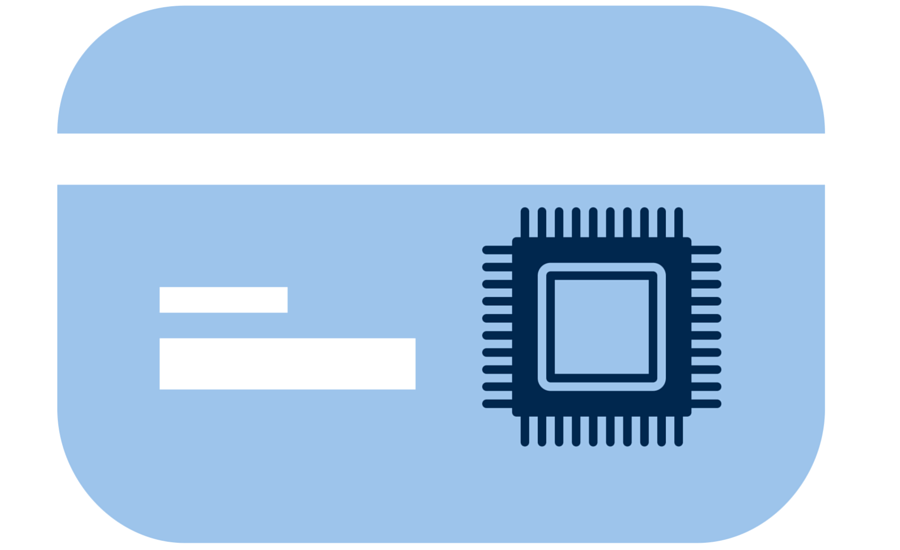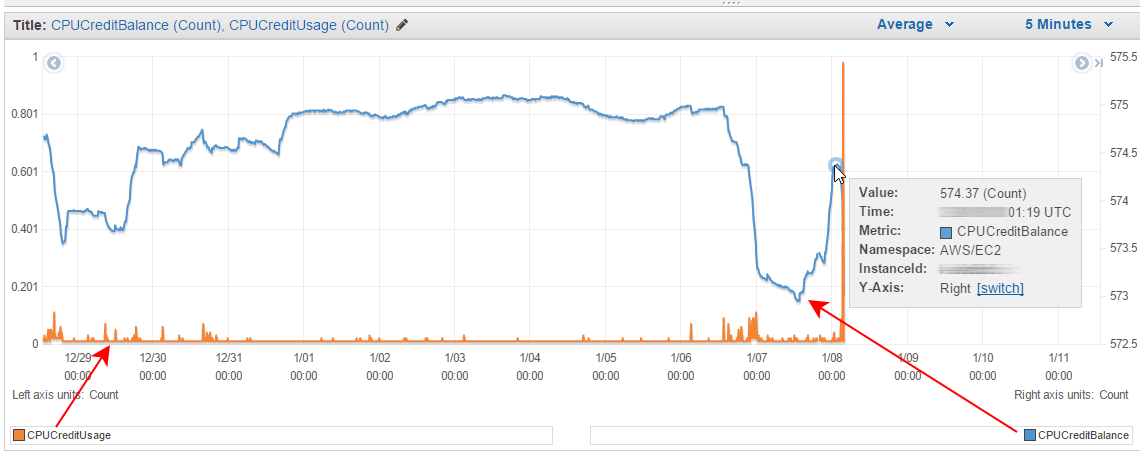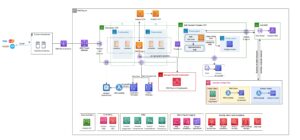When you run out of CPU credits on AWS, your burstable performance instance will experience a decrease in CPU performance. This can lead to slower processing speeds and potential impact on your application’s performance.
Running out of CPU credits can result in throttled CPU performance, affecting the overall responsiveness of your instance. In addition, it may require additional credits to be purchased or upgrading to a different instance type to maintain optimal performance. Understanding how CPU credits work and monitoring usage is essential for ensuring consistent performance for your AWS instances.

Credit: www.concurrencylabs.com
Introduction To Cpu Credits In Aws
CPU Credits in AWS are crucial for maintaining performance. Running out can lead to degraded performance or even instance shutdown. To avoid this, monitor your credits regularly and consider optimizing your instance usage for efficient resource management.
When it comes to managing your resources efficiently on Amazon Web Services (AWS), understanding CPU credits is essential. CPU credits are a vital component of AWS’s pricing model and play a crucial role in determining the performance of your instances. In this article, we will explore the basics of CPU credits and their significance for performance optimization.
Basics Of Cpu Credits
CPU credits are a way for AWS to measure and allocate CPU usage for your instances. AWS provides two types of instances: burstable performance instances and fixed performance instances. Burstable performance instances, such as the T2 and T3 instance families, earn CPU credits when they operate below their baseline performance level. These credits are then used to burst above the baseline when the instance requires more CPU resources.
On the other hand, fixed performance instances, like the M5 and C5 instance families, do not earn or use CPU credits. They provide a consistent level of CPU performance throughout their usage.
Each instance type has a baseline performance level, which defines the number of CPU credits earned per hour of usage when operating below the baseline. For example, a T2.micro instance has a baseline performance of 10% CPU utilization, which means it earns 6 CPU credits per hour if it operates at or below this level.
Significance For Performance
The significance of CPU credits lies in their impact on the performance of your instances. When your burstable performance instance runs out of CPU credits, it is limited to its baseline performance level, which can result in a decrease in performance. This means that if your instance consistently operates above its baseline, it will gradually consume all its CPU credits and eventually experience a performance slowdown.
To maintain optimal performance, it is crucial to monitor your CPU credit balance and ensure that it stays within acceptable limits. AWS provides various monitoring tools, such as Amazon CloudWatch, to help you keep track of your CPU credits and take necessary actions to avoid running out.
When your instance exhausts its CPU credits, it enters a state called CPU credit exhaustion. During this state, the instance’s CPU performance is limited, and it can no longer burst above its baseline. To regain burstable performance, you either need to accumulate more CPU credits by operating below the baseline or upgrade to a fixed performance instance.
Understanding CPU credits in AWS is essential for optimizing performance and managing costs effectively. By monitoring your CPU credit balance and taking appropriate actions, you can ensure that your burstable performance instances perform optimally without running out of CPU credits.
Running Out Of Cpu Credits
When your AWS EC2 instance runs out of CPU credits, it can have a significant impact on your application’s performance and overall user experience. Understanding the immediate effects and the long-term impact on application performance is crucial for effective management of your AWS resources.
Immediate Effects
When your EC2 instance runs out of CPU credits, it enters into a state where it is no longer able to burst above its baseline performance level. This means that the instance will operate at a reduced capacity, leading to potential slowdowns and delays in processing user requests. In extreme cases, the instance may even become unresponsive, affecting the availability of your application.
Impact On Application Performance
The impact of running out of CPU credits on application performance can be significant. As the instance operates at a reduced capacity, the response times for user requests may increase, leading to a poor user experience. This can result in decreased user satisfaction and potentially impact the reputation of your application or service. It’s essential to monitor CPU credit balances and take proactive measures to prevent running out of credits to maintain optimal application performance.
Monitoring Cpu Credit Balance
Running out of CPU credits on AWS can be a nightmare for businesses and individuals alike. When your CPU credits hit 0, your EC2 instance will experience performance issues, and it might even become unresponsive. In this article, we’ll explore some tools and techniques to help you monitor your CPU credit balance, so you can avoid running out of credits and the resulting downtime.
Tools And Techniques
One of the best ways to monitor your CPU credit balance is to use CloudWatch, Amazon’s monitoring service. With CloudWatch, you can track metrics such as CPU utilization, CPU credit usage, and CPU credit balance. By monitoring these metrics, you’ll be able to see when your CPU credit balance is getting low and take action to prevent running out of credits.
Another technique you can use to monitor your CPU credit balance is to set up alerts. AWS allows you to set up CloudWatch alarms that will notify you when your CPU credit balance falls below a certain threshold. This can be a valuable tool for preventing downtime and ensuring that your applications are always running smoothly.
Setting Up Alarms
Setting up alarms in AWS is a straightforward process. First, you’ll need to navigate to the CloudWatch console and select the metrics you want to monitor. Once you’ve selected your metrics, you can create an alarm and set the threshold for when you want to be notified. You can choose to receive notifications via email, SMS, or other channels.
When setting up alarms, it’s important to choose a threshold that gives you enough time to take action before your CPU credits run out. For example, if you have an application that uses a lot of CPU, you might want to set your threshold higher to ensure that you have enough time to add more credits before running out.
Monitoring your CPU credit balance is an important part of ensuring that your applications are always running smoothly on AWS. By using tools like CloudWatch and setting up alarms, you can avoid the downtime and performance issues that come with running out of CPU credits. So, take the time to monitor your CPU credit balance regularly, and you’ll be able to keep your applications up and running without any issues.

Credit: docs.aws.amazon.com
Strategies To Conserve Cpu Credits
When you run out of CPU credits on AWS, your instance may become unresponsive or even stop working. This can cause delays, disruptions, and even downtime for your application. To prevent this from happening, it is important to conserve your CPU credits. In this article, we will discuss strategies to help you optimize your applications and choose the right instance type to conserve CPU credits on AWS.
Optimizing Applications
One of the most effective ways to conserve CPU credits is by optimizing your applications. Here are some tips to help you optimize your applications:
- Reduce the number of requests your application makes to the CPU.
- Use caching to reduce the load on the CPU.
- Avoid using unnecessary background processes that consume CPU resources.
- Use efficient algorithms and data structures to reduce CPU usage.
Choosing The Right Instance Type
Choosing the right instance type is also crucial in conserving CPU credits. Here are some factors to consider when selecting an instance type:
| Factor | Description |
|---|---|
| CPU | Choose an instance type with the appropriate number of vCPUs for your application. |
| Memory | Choose an instance type with enough memory to support your application. |
| Network | Choose an instance type with the appropriate network performance for your application. |
By following these strategies, you can help conserve CPU credits and ensure that your application runs smoothly on AWS.
When To Upgrade Your Aws Plan
When your AWS plan runs out of CPU credits, it’s time to consider upgrading. Running out of credits can lead to performance issues and limited functionality. Upgrade your plan to ensure smooth operation and avoid any disruptions to your AWS services.
Running out of CPU credits on your AWS (Amazon Web Services) plan can be a frustrating experience. It can lead to decreased performance and potential downtime for your applications or websites. To prevent this, it’s important to know when to upgrade your AWS plan. In this article, we’ll explore the signs that indicate you need more power and how to compare the costs and benefits of upgrading.
Signs You Need More Power
There are several signs that indicate you may need to upgrade your AWS plan to avoid running out of CPU credits:
- Slow performance: If you notice a significant decrease in the speed and responsiveness of your applications or websites, it could be a sign that your current plan is not providing enough CPU power.
- Increased resource utilization: Monitoring the resource utilization of your instances can help you identify when you’re approaching the limit of your CPU credits. If you consistently see high CPU utilization, it’s a clear indication that you need more power.
- Frequent credit depletion: If you find yourself frequently running out of CPU credits, it’s a strong indication that your current plan is not sufficient for your workload.
- Unpredictable workload: If your workload is highly variable and you frequently experience spikes in CPU usage, it’s advisable to upgrade your plan to ensure consistent performance.
Comparing Costs And Benefits
Before upgrading your AWS plan, it’s crucial to compare the costs and benefits to make an informed decision:
| Costs | Benefits |
|---|---|
|
|
By carefully considering the costs and benefits, you can determine whether upgrading your AWS plan is the right choice for your business.
Automating Management Of Cpu Credits
Automating management of CPU credits in AWS ensures that your application’s performance remains consistent even if you run out of CPU credits. The automation adjusts your CPU credits to meet your application’s demand and maintains optimal performance.
Using Aws Auto Scaling
Automating Management of CPU Credits helps optimize AWS resource usage.
AWS Auto Scaling adjusts capacity based on real-time demand.
Scripting And Bots
Automated scripts and bots monitor and manage CPU credits efficiently.
Scripting automates tasks to prevent CPU credit exhaustion.
Case Studies: Avoiding Downtime
Avoiding downtime is crucial for any business, and running out of CPU credits on AWS can lead to just that. In this case study, we explore what happens when you run out of CPU credits on AWS and how to prevent it from happening.
Success Stories
In one case, a company monitored CPU credits and upgraded instances preemptively.
As a result, they avoided downtime and maintained seamless operations.
Lessons Learned
Another company overlooked CPU credits and faced sudden downtime.
They learned the importance of proactive monitoring and resource management.

Credit: www.cloudinsidr.com
Conclusion: Staying Ahead Of The Curve
Running out of CPU credits on AWS can lead to performance issues and potential downtime for your applications. To stay ahead of the curve, it’s crucial to monitor your CPU credit balance and consider upgrading your instance type or adjusting your application’s resource usage to avoid interruptions in service.
Best Practices Recap
When running low on CPU credits in AWS, optimize your instance sizes.Future-proofing Your Aws Infrastructure
Plan for scalability to avoid CPU credit depletion in AWS.Frequently Asked Questions
What Happens When A T2 Small Instance Runs Out Of Cpu Credits?
When a T2 small instance runs out of CPU credits, its performance is limited and it operates at a baseline level. This means that the instance will experience a decrease in CPU performance until it accrues more credits. It is important to monitor and manage CPU credits to ensure optimal performance.
How To Increase Cpu Credit In Aws?
To increase CPU credit in AWS, you can use burstable instances, optimize your application’s resource usage, or purchase a larger instance size. Keep an eye on CPU credit balance and monitor usage to ensure consistent performance.
What Is Cpu Credit Balance In Aws?
CPU credit balance in AWS refers to the amount of CPU credits available for your EC2 instance. These credits are earned when the instance operates below its baseline performance level. During peak usage, the credits are consumed to maintain performance.
It’s a way to manage CPU usage and ensure consistent performance for your applications.
How Much Cpu Utilization Is Normal Ec2?
Normal CPU utilization for an EC2 instance varies but typically ranges from 10% to 70%. It can be influenced by the workload and instance type. Monitoring and adjusting resources can help optimize performance.
Conclusion
Running out of CPU credits on AWS can have significant consequences for your website or application. It can lead to performance issues, slowdowns, and even complete unavailability. Monitoring and managing your CPU credits is crucial to ensure the smooth operation of your AWS resources.
By understanding the impact of running out of CPU credits and implementing strategies to prevent it, you can maintain optimal performance and avoid any disruptions to your online presence. Stay proactive and stay ahead of any potential CPU credit shortages to keep your AWS environment running smoothly.






